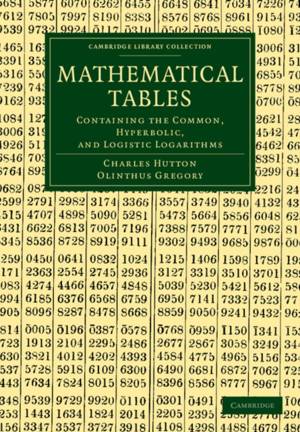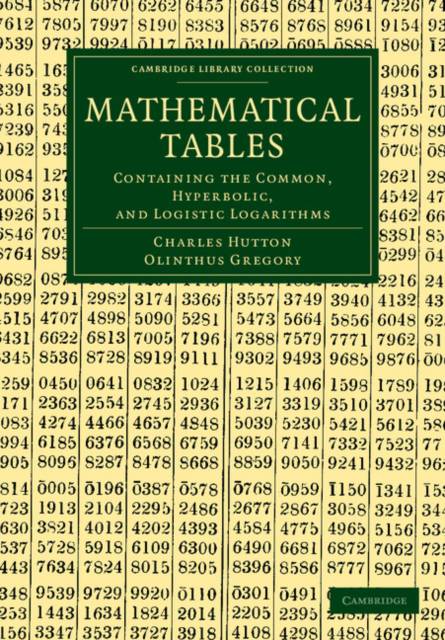
- Afhalen na 1 uur in een winkel met voorraad
- Gratis thuislevering in België vanaf € 30
- Ruim aanbod met 7 miljoen producten
- Afhalen na 1 uur in een winkel met voorraad
- Gratis thuislevering in België vanaf € 30
- Ruim aanbod met 7 miljoen producten
Zoeken
Mathematical Tables
Containing the Common, Hyperbolic, and Logistic Logarithms
Charles Hutton, Olinthus Gregory
€ 95,45
+ 190 punten
Omschrijving
Prior to the advent of computers, no mathematician, physicist or engineer could do without a volume of tables of logarithmic and trigonometric functions. These tables made possible certain calculations which would otherwise be impossible. Unfortunately, carelessness and lazy plagiarism meant that the tables often contained serious errors. Those prepared by Charles Hutton (1737-1823) were notable for their reliability and remained the standard for a century. Hutton had risen, by mathematical ability, hard work and some luck, from humble beginnings to become a professor of mathematics at the Royal Military Academy. His mathematical work was distinguished by utility rather than originality, but his contributions to the teaching of the subject were substantial. This seventh edition was published in 1858 with additional material by Olinthus Gregory (1774-1841). The preliminary matter will be of interest to any modern-day reader who wishes to know how calculation was done before the electronic computer.
Specificaties
Betrokkenen
- Auteur(s):
- Uitgeverij:
Inhoud
- Aantal bladzijden:
- 442
- Taal:
- Engels
- Reeks:
Eigenschappen
- Productcode (EAN):
- 9781108054027
- Verschijningsdatum:
- 11/10/2012
- Uitvoering:
- Paperback
- Formaat:
- Trade paperback (VS)
- Afmetingen:
- 170 mm x 244 mm
- Gewicht:
- 698 g

Alleen bij Standaard Boekhandel
+ 190 punten op je klantenkaart van Standaard Boekhandel
Beoordelingen
We publiceren alleen reviews die voldoen aan de voorwaarden voor reviews. Bekijk onze voorwaarden voor reviews.








